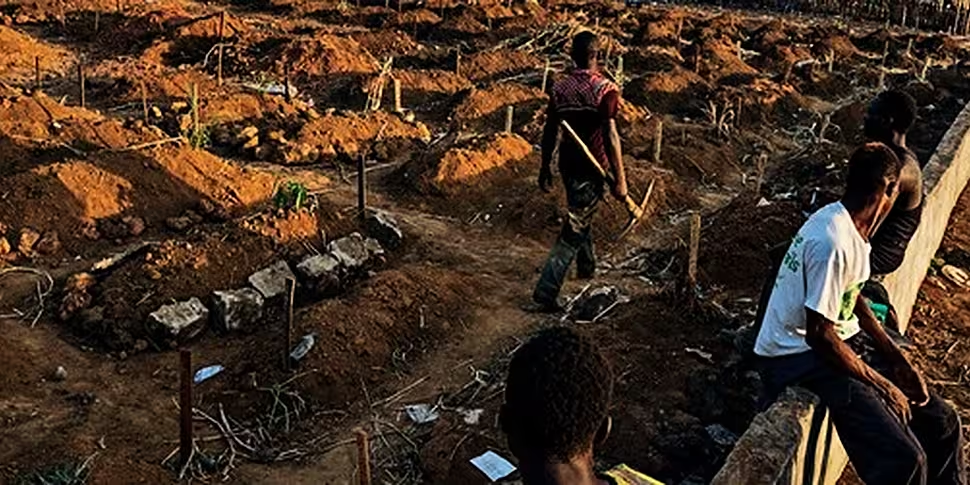The first recorded case of an outbreak was in 1976. In what was then Zaire, now the Democratic Republic of the Congo, the first signs of infection appeared on September 1st. The disease ran rampant across the country, first infecting victims in Yambuku, then stretching indiscriminately for a 70km radius. By October 24th, the official end of that first outbreak, 318 people had been infected with the Zaire virus. 38 of them had survived. In the Center for Disease Control report, they used a small Zairian river to give the haemorrhagic virus a more recognisable name: Ebola.
In the 39 years since, there have been a further 25 Ebola outbreaks, both small and large scale, but infrequent. In fact, from 1977 to 1994, there was not any confirmed death associated with the disease, which strikes hard and deadly, but intermittently. Where is it hiding?
“It absolutely is a detective story, it’s been a mystery for 39 years now,” David Quammen, a journalist with National Geographic who recently wrote an article (photographs can be found here) on the hunt for Ebola's reclusive hideaway, told Sean Moncrieff earlier this week.
“Scientists still do not know where the virus lives when it’s not killing people. There has to be another creature, probably an animal, that serves as, they call it, the reservoir host, the refuge, the hiding place of the virus. It has to be in living creatures and we still have not identified that host.”

Ebola can often strike in remote parts of the DRC, spreading quickly to urban areas despite the poor infrastructure [© Pete Muller/National Geographic]
What virologist and microbiologists do know is that a virus simply cannot survive for any real length of time without a living host. Something, be it flora, fauna, fungus or microbe is helping the disease to hide and replicate, providing a warm and safe place for Ebola to reproduce itself while biding its time for the next human outbreak.
Wherever it is that Ebola is lurking, known to scientists as the ‘reservoir host’, we do know that it isn’t in our closest relatives. Chimps and gorillas, like human beings, suffer huge losses whenever Ebola strikes, dying off in large numbers, with testing on their remains showing remnants of the virus. So if isn’t one of the usual suspects, in which creature is Ebola biding its time?
“There are certainly suspects, and that is what I write about in this story in National Geographic, writing about the suspects, the hypotheses, the effort over the years to identify why it has been so hard to solve the question of what is the reservoir host,” Quammen said.
“People have probably heard, ‘Oh, Ebola lives in bats.’ Maybe they’ve even heard fruit bats. And there are several species of fruit bat in Africa, Central Africa and West Africa that have been implicated as suspects. But the absolute proof of that, which is finding live virus which can be replicated in the lab within one of those animals has never been achieved. Researchers have found antibodies against the virus, they have found fragments of viral RNA, but they’ve never managed to get live virus from an animal and grow it in a lab. And until that’s done, we don’t really know where it’s hiding.”

Scientists are currently focussing on fruit bats as potential reservoir hosts [© Pete Muller/National Geographic]
What makes finding the reservoir host so difficult is timing; when an outbreak breaks out, with public panic rising even faster than the rate of infection, right at the time when the reservoir host has surfaced to bring forth a fresh new wave of pestilence, attention turns immediately, and quite rightly in many respects, to the public health emergency taking place.
As Quammen says, the last thing that African villagers need to see while watching their loved ones bleed to death is Western scientists performing detailed dissections of small jungle rodents in their search for a virulent needle in a haystack.
“You can’t do research on the reservoir host question while people are dying, while there’s this great public health emergency. People in African villages and African cities don’t wanna see foreigners in moon suits collecting rodents and bats and sampling them in the midst of a great public health emergency. You can’t do that research while the outbreak is going on.”
“Then the outbreak ends, people tend to forget about it, the money goes away, the interest goes away, and it’s hard to support research on the reservoir-host question.”

Two men hunt for spider monkeys in the DRC jungles [© Pete Muller/National Geographic]
And therein lies the biggest problem with the Ebola epidemic – the complacency that lurks, like the reservoir host, between outbreaks. While the West African strain that has killed thousands in the last year now seems to be under control in Liberia, and is claiming fewer and fewer victims in Guinea and Sierra Leone, all we’ve managed to do, to use an oft-repeated medial adage, is treat the symptoms and not the route cause.
Ebola is waiting. Hiding. It will strike again. It could be months, it could be years. But until the day we finally do track down the reservoir host, we’re just one day closer to the next outbreak.
“That’s been one of the problems over the years,” Quammen told Sean Moncrieff.
“We hope that this latest outbreak and epidemic has been so horrific that we hope that the resources won’t go away. And that countries and agencies will support serious research for the identity of the reservoir host. So that we can prevent these outbreaks in the future.”
All of the images used in this article come from the July edition of National Geographic.

[National Geographic]
You can listen back to David Quammen's full interview with Sean Moncrieff on the hunt for the reservoir host below:









